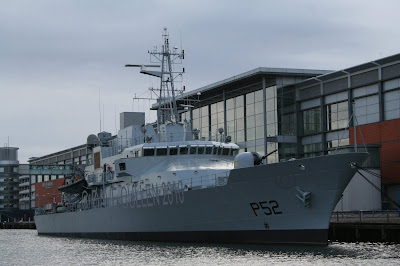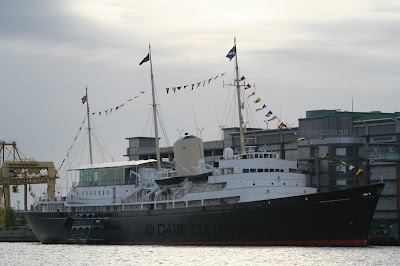Niamh (P52) is a Roisin Class Offshore Patrol Vessel in the Irish Naval Service. She is the youngest ship in service in the Irish fleet, and is named after Niamh, queen of Tir no nOg, from Irish mythology.
The second of class Roisin Class Offshore Patrol Vessel, Niamh was built by Appledore Shipbuilders in Devon, UK, she entered service with the Irish Naval Service in July 2001, and is based at the Haulbowline Island, Cork Harbour Headquarters and Dockyard.
The ship was designed by STX Canada Marine (formerly Kvaerner Masa Marine) and has an all-steel hull based on the Mauritian Vigialnt patrol vessel launched in 1995, but without the helicopter deck and hangar facilities. The high level of automation incorporated into the ship's systems allows the ship to be operated with just 44 crew including six officers. The crew is provided with comfortable accommodation. The vessel is designed for winter North Atlantic operations.
Niamh was involved in the rescue of the Canadian navy submarine Chicoutimi off the north west coast of Ireland on October 5th 2004.
The Niamh played an important role in the seizure of €750 million of cocaine off the Irish coast in November 2008, as part of Operation Seabight. It was used by authorities to approach and board the yacht Dances with Waves, which contained 75 bales of the controlled substance.
She is seen here departing Leith and heading for Iceland.
















































